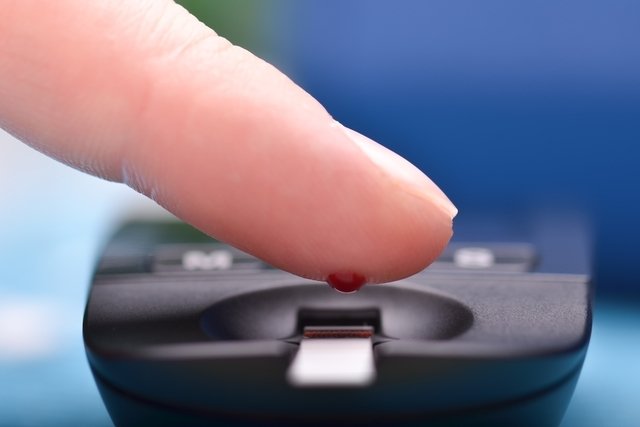Childhood diabetes, or childhood DM, is a condition characterized by a high concentration of glucose circulating in the blood, which results in increased thirst and the urge to urinate, as well as increased hunger, for example.
Type 1 diabetes is the most common in children and occurs due to the destruction of the pancreas cells responsible for producing insulin, which is the hormone responsible for transporting sugar into cells and preventing it from accumulating in the blood. This type of childhood diabetes has no cure, only control, which is mainly done with the use of insulin, as advised by the pediatrician.
Although type 1 diabetes is more common, children who have unhealthy lifestyle habits can develop type 2 diabetes, which can be reversed at an early stage through the adoption of healthy habits such as a balanced diet and physical activity. .

Main symptoms
The main symptoms of childhood diabetes are:
- Increased hunger;
- Constant feeling of thirst;
- Dry mouth;
- Increased urge to urinate, even at night;
- Blurry vision;
- Excessive tiredness;
- Somnolence;
- Lack of desire to play;
- Nausea and vomiting;
- Weight loss;
- Recurrent infections;
- Irritability and mood changes;
- Difficulty understanding and learning.
When a child presents some of these symptoms, it is recommended that parents consult a pediatrician so that a diagnosis can be made and treatment can be started, if necessary. See more on how to identify the early signs of diabetes in children.
How to confirm the diagnosis
The diagnosis of childhood diabetes is made through a fasting blood test to check circulating blood glucose levels. The normal fasting blood glucose value is up to 99 mg/dL, therefore, higher values may be indicative of diabetes, and the doctor should request other tests to confirm diabetes. Find out about the tests that confirm diabetes.
To find out your risk of diabetes, indicate the test performed and insert the glucose test result into the following calculator:
What causes childhood diabetes
The most common type of diabetes in childhood is type 1 diabetes, which has a genetic cause, meaning the child is born with this condition. In this type of diabetes, the body’s own cells destroy the cells in the pancreas responsible for producing insulin, which causes glucose to remain in high concentrations in the blood. Despite having a genetic cause, diet and lack of physical activity can also further increase the amount of glucose in the blood and, thus, worsen symptoms.
In the case of type 2 childhood diabetes, the main cause is an unbalanced diet rich in sweets, pasta, fried foods and soft drinks, in addition to a lack of physical activity.
What to do
If childhood diabetes is confirmed, it is important for parents to encourage healthier habits in their children, such as physical activity and a healthier, more balanced diet. It is important that the child is referred to a nutritionist, who will carry out a complete assessment and will recommend the most appropriate diet for the child according to the child’s age and weight, type of diabetes and treatment being carried out.
The diet for childhood diabetes must be divided into 6 meals during the day and must be balanced in proteins, carbohydrates and fats, avoiding foods rich in sugar. One strategy to make the child eat right and follow the diet is for the family to also follow the same type of diet, as this reduces the child’s desire to eat other things and facilitates the treatment and control of blood glucose levels.
In the case of type 1 childhood diabetes, it is recommended, in addition to healthy eating and exercise, the use of daily insulin injections, which should be done according to the pediatrician’s instructions. It is also important to monitor the child’s blood glucose levels before and after the meal, as if there is any change it is necessary to go to the pediatrician to avoid complications.
Check out some tips on what to do if your child has diabetes.

Sign up for our newsletter and stay up to date with exclusive news
that can transform your routine!
Warning: Undefined array key "title" in /home/storelat/public_html/wp-content/plugins/link-whisper-premium/templates/frontend/related-posts.php on line 12
Warning: Undefined array key "title_tag" in /home/storelat/public_html/wp-content/plugins/link-whisper-premium/templates/frontend/related-posts.php on line 13




